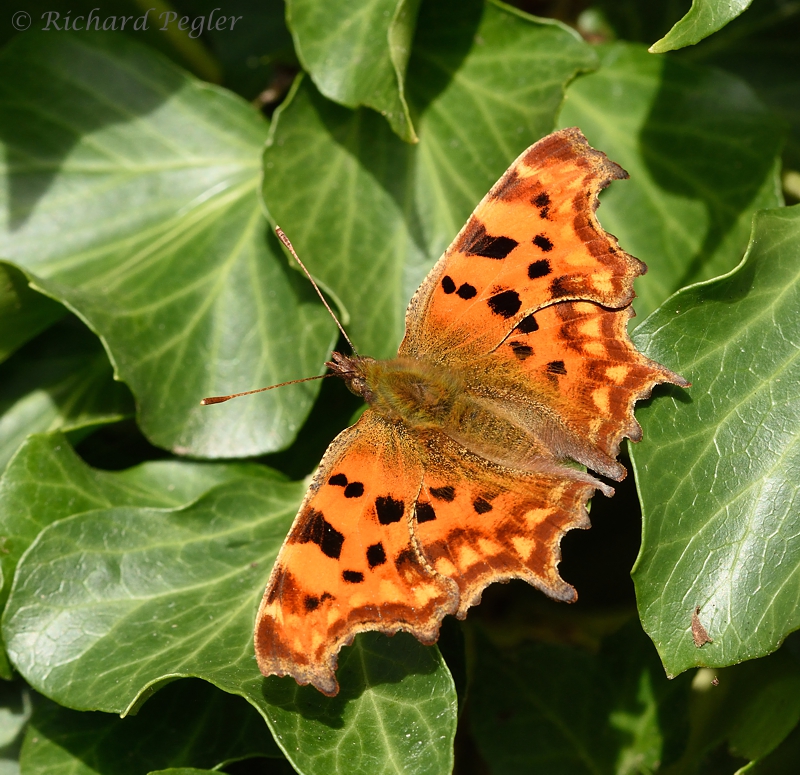It has been rather a long time since my previous blog post as I have been busy. However, I've now completed the garden path, and so I feel the need to keep things flowing by putting something on the blog. This blog post will be a relatively short one, but I have a feeling that the next blog post might be somewhat longer!
Monday, 7th September
The week got of to a slow start as far as sightings were concerned, and the only photos taken were of a juvenile Woodpigeon. I do not usually bother to photograph Woodpigeons, but I do not remember ever photographing a juvenile one before.
 |
| Woodpigeon (Columba palumbus) (juvenile) - garden on 8th September, 2020 |
Tuesday, 8th September
In the morning, I photographed a hoverfly on a michaelmas daisy. I believe it to be Eristalis tenax, but please correct me if I'm wrong!
 |
| hoverfly (Eristalis tenax) - garden on 8th September, 2020 |
I arrived to find the 'pond' had dried up to the extent that you'd have been hard-pressed to fill a domestic wash-basin with the water left in it. Not a single dragonfly or damselfly was seen there.
I carried on regardless, in the hope of finding birds, and maybe some damselflies by the River Trent at the far end of the site. Cutting a long story short, I didn't find any odonata, and virtually no birds were seen.
I then returned and cut off eastward under the railway and across the meadow to the hide by the smaller of the two lakes. Soon after arriving at the hide, a Kingfisher suddenly appeared in the distance, hovered for a couple of seconds above the water, dived, and then came out and shot behind trees to my right. During this brief time, I didn't even manage to get it in my viewfinder. I waited an hour in the hope that it would return, but to no avail - I even started photographing trains to pass the time!
 |
| DB Cl.66, No. 66 124 (EMD) - Croxall Lakes |
 |
| Canada Goose (Branta canadensis) - Croxall Lakes |
 |
| Parasol Mushroom (Macrolepiota procera) - Croxall Lakes |
Things were getting somewhat frustrating so it was time to go somewhere where I knew I had a chance of seeing something worthwhile. It would only be a very small diversion from my route home to call in at Saltersford Valley so that is what I did!
Having parked, it was but a short walk to the boardwalk at the eastern side of the first lake. I arrived to find a male Southern Hawker dragonfly holding territory at the near end of the boardwalk. I must have spent getting on for half an hour trying to get flight shots of this dragonfly, but got nothing but an identifiable blurry shot before it departed. I then took a wander along the boardwalk and managed to find what was probably my last Ruddy Darter of the year.
 |
| Ruddy Darter (Sympetrum sanguineum) (male) - Saltersford Valley |
 |
| Coot (Fulica atra) - Saltersford Valley |
 |
| Speckled Wood (Pararge aegeria) - Saltersford Valley |
 |
| Coot (Fulica atra) (juvenile) - Saltersford Valley |
 |
| Migrant Hawker (Aeshna mixta) (male) - Saltersford Valley |
Wednesday, 9th September
Nothing remarkable in the garden this day, but I did get some shots of a Comma butterfly that was in a rather bright condition.
 |
| Comma (Polygonia c-album) - garden on 9th September, 2020 |
This day brought us some excitement in the form of visits from a Nuthatch, a Willow Warbler, and (not seen for some weeks previously) a Stock Dove. Sadly, I only managed photos of the Nuthatch, but was happy to get these as this is a species rarely seen in the garden. It was busy hiding sunflower hearts in nooks and crannies and, at one time, seemed to be playing hide-and-seek with a House Sparrow.
 |
| Nuthatch (Sitta europaea) - garden on 10th September, 2020 |
There was then little of significant interest in the garden until the end of the week, and on this day the Nuthatch returned, but any photos taken were rather less acceptable than those above. Most excitement was caused, however, by visits from two dragonflies, neither of which stayed long enough for a photo. The first was a male Common Darter (Sympetrum striolatum), and the second a male Southern Hawker (Aeshna cyanea).
That brings me to the end of this blog post. As mentioned above, the next blog post is likely to be a long one, and might well be a couple of weeks in the production process! In the meantime, stay safe and well, and look after nature so that it can look after you.























































